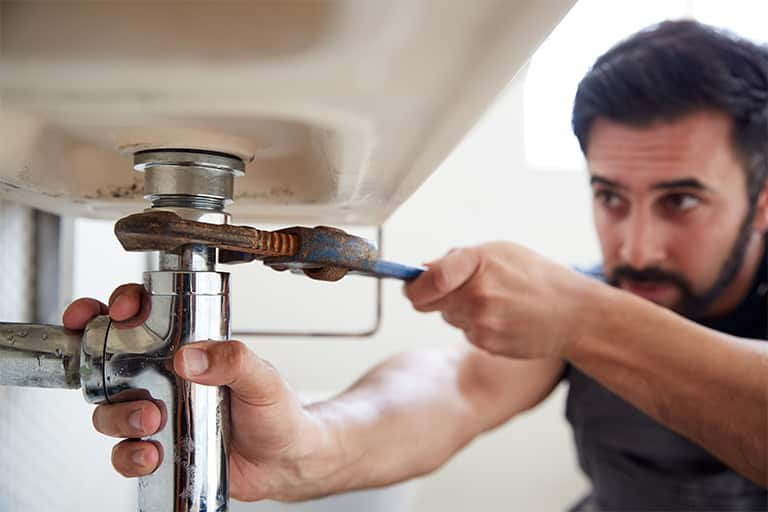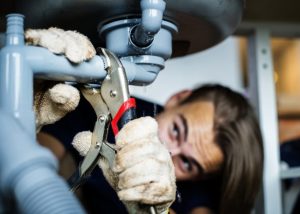Exactly how to Inspect If Your Home Has a Hidden Leakage
Exactly how to Inspect If Your Home Has a Hidden Leakage
Blog Article
We've encountered this post involving Detecting hidden plumbing leaks down the page on the net and figured it made good sense to discuss it with you over here.

Early discovery of leaking water lines can minimize a prospective disaster. Some small water leaks might not be noticeable.
1. Take A Look At the Water Meter
Every house has a water meter. Examining it is a guaranteed manner in which helps you uncover leaks. For beginners, switch off all the water sources. Make certain nobody will certainly flush, utilize the tap, shower, run the washing maker or dishwasher. From there, most likely to the meter and also watch if it will alter. Since nobody is utilizing it, there ought to be no activities. That indicates a fast-moving leak if it relocates. Furthermore, if you spot no changes, wait a hr or two as well as examine back again. This means you might have a slow-moving leakage that could even be below ground.
2. Inspect Water Intake
If you find sudden changes, in spite of your usage being the exact same, it indicates that you have leakages in your plumbing system. An unexpected spike in your expense suggests a fast-moving leak.
Meanwhile, a steady increase every month, even with the very same behaviors, reveals you have a slow-moving leakage that's likewise slowly escalating. Call a plumber to thoroughly check your home, especially if you feel a cozy area on your floor with piping beneath.
3. Do a Food Coloring Test
When it comes to water usage, 30% comes from toilets. If the color in some way infiltrates your bowl throughout that time without flushing, there's a leakage in between the storage tank and dish.
4. Asses Exterior Lines
Don't fail to remember to examine your outside water lines as well. Needs to water leak out of the connection, you have a loose rubber gasket. One little leakage can lose heaps of water as well as surge your water bill.
5. Analyze the scenario as well as evaluate
House owners must make it a practice to check under the sink counters and also even inside cabinets for any kind of bad odor or mold growth. These 2 red flags show a leak so prompt focus is needed. Doing routine inspections, also bi-annually, can save you from a significant issue.
Much more notably, if you understand your home is currently old, keep a watchful eye on your heating systems, hose pipes, pipelines etc. Check for stainings and deteriorating as many pipelines and devices have a life span. They will additionally naturally degrade due to deterioration. If you believe leaking water lines in your plumbing system, do not await it to intensify. Call a professional plumber immediately so you do not wind up with an awful mess in your house.
Early discovery of leaking water lines can mitigate a prospective catastrophe. Some little water leaks may not be visible. Inspecting it is a proven means that helps you discover leaks. One little leakage can waste lots of water as well as increase your water expense.
If you presume leaking water lines in your plumbing system, do not wait for it to escalate.
How to Know If Your Home Has a Hidden Leak
Water Meter Reveals Inexplicable Water Usage
If you’d like to test whether or not there’s a leak somewhere in your home, you can do this using your water meter. Here is how to conduct the test:
Don’t use any water in your home for at least 30 minutes; this also means not turning on faucets or water-using appliances.
Go outside, and check your water meter for activity.
If your water meter shows that there was activity, even though no one was using any water, this proves that there is a leak in your home.Visible Mold or Mildew Growth
Leaks behind walls create moist, dark environments that allow mold and mildew to grow and thrive. Eventually, you might see mold growth forming on the wall closest to a hidden leak.
If mold is growing in an area that receives a high amount of moisture, such as a bathroom, it may simply be an indication that better ventilation is needed. However, if you see mold growth on a wall or the ceiling in an area where you would not expect, you probably have a hidden leak.
Musty, Mildew Odor
Sometimes you might not be able to see the mold or mildew that is growing as a result of a leak. However, the smell can give the problem away just as easily. If you catch a whiff of something musty, there’s a good chance that old water is collecting somewhere in your home that you can’t see.
Stained/Warped Walls, Ceilings, or Floors
When your home soaks up water, a variety of red flags can become visible, including ceiling stains, bubbling drywall, warped walls, and sagging floors. While these issues can be caused by excess humidity, they can also be signs that a pipe or plumbing connection has started leaking behind your walls.
Inexplicably High Water Bill
After a while, you get a general sense for what your water bill should be. If you own a pool or sprinkler system, your bill will tend to be higher during summer. However, if you receive a water bill that seems especially high, and you can’t figure out what caused it, then you may have a hidden leak somewhere that’s increasing your bill.
https://www.plumbingjoint.com/blog/2019/july/how-to-know-if-your-home-has-a-hidden-leak/

I ran across that review on Detecting hidden plumbing leaks while doing a lookup on the search engines. Those who liked our page if you please don't forget to share it. Thank you for your time invested reading it.
Report this page